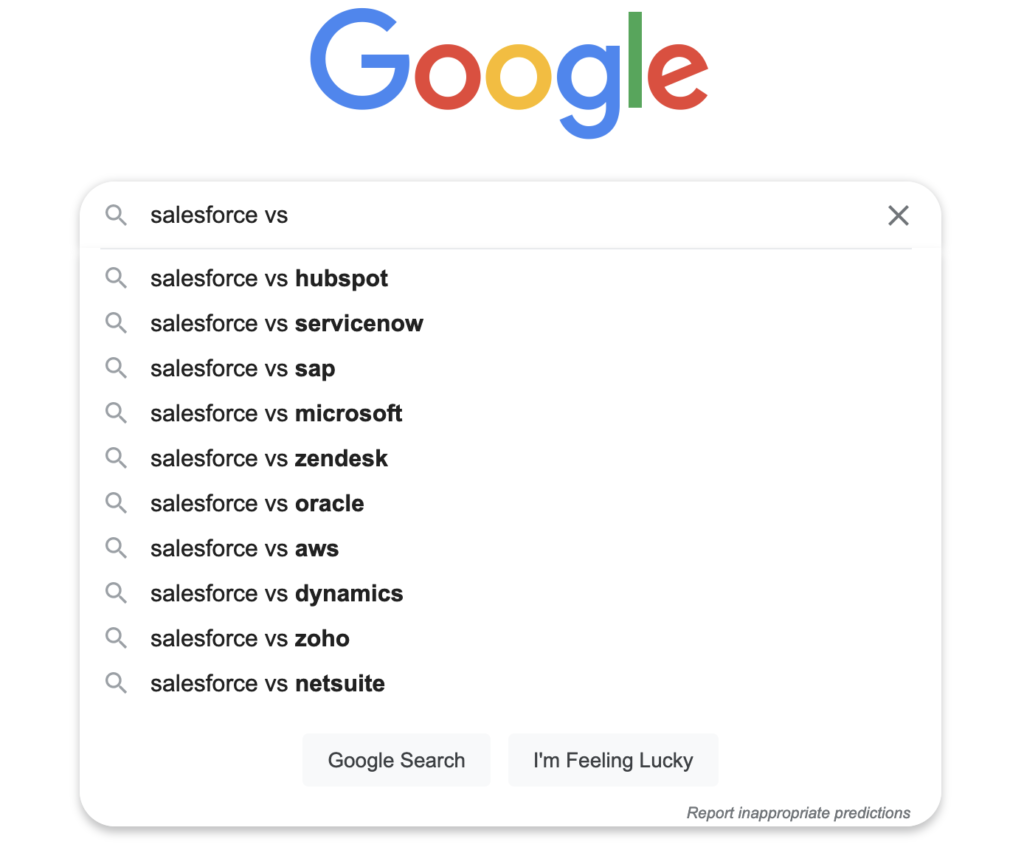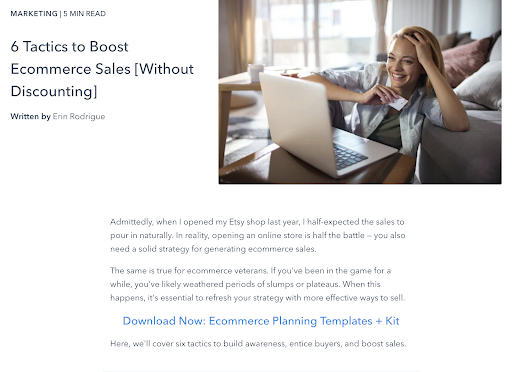30-second summary:
- B2B conversion funnels are long and unpredictable, and your SEO strategy should reflect that
- Because it takes several touchpoints for a buying decision to be made, a B2B SEO strategy should focus on both informational and commercial phrases
- Brand-driven search is crucial for your conversions because B2B customers tend to careful consider all options
- While optimizing for informational queries is important, make sure you have distinct conversion paths on each page
- Create consistent visual identity across on- and off-site channels to improve brand recognizability at each touchpoint
There’s one key difference between B2B and B2C conversions: B2B shopping is almost never spontaneous. It takes several decision makers (which are collectively referred to as a decision making unit or a DMU) to review several options and make a choice.
A B2B shopping journey can thus take weeks and months.
Obviously, the organic search optimization strategy should address that challenge ensuring that more of those clicks driven by organic positions result in leads and sales.
1. Create SEO-driven landing pages for both TOFU and MOFU parts of the sales funnel
Fundamentally, a B2B marketing funnel consists of three stages: top, middle and bottom. The final stage is where the final sale happens, and may take eight touchpoints (i.e. a potential customer seeing or interacting with the site in some way or another) for a buying decision to finalize.
Traditionally, when it comes to SEO, businesses tend to prioritize landing pages that drive direct sales. In B2B it is hardly possible because customers tend to make lots of searches prior to making a purchase.
This is why informational search queries (those driving top of the funnel) are as important in B2B as commercial queries are.
How-to queries
How-to queries are highly engaging because visitors tend to stay on the page while taking the steps in a tutorial.
These are also likely to be transactional queries that may drive conversions if you manage to solve the customer’s problem.
Filter your keyword lists to how-to queries and start your optimization efforts by providing useful instructions (where your product is included in a non-promotional context as part of the solution).
You can also use Google Search Console to find how-to queries your site is already ranking: Come up with a plan to improve your positions for those:

Google’s People Also Ask and Suggestions
Both People Also Ask and suggestions impact searching journeys because they show up while people search giving them more ideas.
Moreover, both are dynamic, that is, they change depending on what people are typing in the search box or what they choose to click.
Because both of these search features can change the direction in which your customers are heading, you need to keep a close eye on those and optimize for each relevant query and question that shows up there.
Make sure you actually search for each of your target keywords and make notes of People Also Ask results and how to best address them on your site. You can use your current FAQ or Knowledge Base or answer each question in a dedicated article, depending on how in-depth an answer should be.
2. Keep a close eye on your (and competitors’) branded search queries
Because B2B purchases usually require long-term investment and commitment, B2B customers tend to carefully consider and compare all possible options and alternatives before finally making a purchase.
This means your brand name will be searched a lot.
Your brand will also be searched alongside your competitors.

No wonder in B2B these queries are always popular:
- Brand name alternatives
- Brand name 1 vs Brand name 2
Treat your brand name as a keyword and keep optimizing your site for it. It is a never-ending process because your competitors are likely to be doing the same.
Keep in mind that your brand-driven search is the most important part of your customers’ buying journeys.
3. Plan and monitor your search-driven buying journeys
Once those searchers land on your site, what do they do from there?
While optimizing for informational-intent queries is important, don’t forget to plan distinct conversion paths from those informational pages down into your sales funnel: Invite people to schedule a demo with you, sign up for a webinar or sign up for a free trial.
Make sure to take full advantage of your lead magnets and lead-qualifying surveys: These normally make the best conversion path from an informational page because they match search intent and provide more answers to the covered questions.
Lead magnets work best when they are contextual, for example, cheat sheets, checklists and flowcharts make it easier to implement how-to content. HubSpot is a prime example of contextual CTAs and lead magnets done well:

Additionally, make sure all your assets are visually branded: Your organic-search-driven visitors should be able to remember you so that your tool looks familiar at the next touchpoint.
Use your logo as a watermark on all images, keep your colors consistent within your site and across your social media channels and make sure all your downloads (ebooks, whitepapers, and other resources) include your visual identity elements and links back to your site.
From there, make sure you know how to monitor those conversion paths. Google Analytics Behavior Flow is a great way to track where people tend to go once they land on a certain page. You can segment this report to users referred to your site from organic search:

Don’t forget to use Facebook pixel to be able to retarget those organic search visitors on social media to generate more touchpoints. You can also use retargeting when running YouTube ads. Both will remind your past visitors of your brand and take them close to a conversion.
Conclusion
Converting your organic search traffic is always a challenge, especially in B2B niches where customers are not likely to commit to your product from the first visit. Yet, when you understand your goals better, a strategic approach will gradually improve your conversions and boost your lead generation efforts.
Ann Smarty is the Founder of Viral Content Bee, Brand and Community manager at Internet Marketing Ninjas. She can be found on Twitter @seosmarty.
Subscribe to the Search Engine Watch newsletter for insights on SEO, the search landscape, search marketing, digital marketing, leadership, podcasts, and more.
Join the conversation with us on LinkedIn and Twitter.
The post How to drive B2B conversions from your organic traffic appeared first on Search Engine Watch.
from Content Archives - Search Engine Watch https://ift.tt/1iyHEZj
via SEW ref=da&site=blogger">IFTTT


No hay comentarios.:
Publicar un comentario